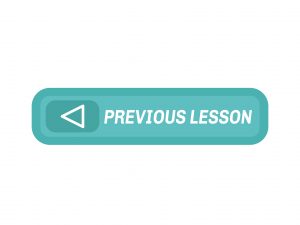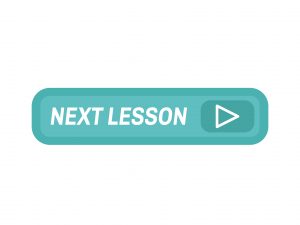
Content mapping and optimization can be hard if you don’t have a sound plan in place first. We learned in Content part 1 on the different types of intent behind a keyword as well as how to do some research. These skills will be necessary and are part of your foundation of SEO.
However, the exciting part of Content 2 is by the time you go through this lesson you’ll have a solid content mapping plan that will make you an SEO content wizard. You won’t be asking yourself “What should I work on next?” You’ll have a list of places organized by highest impact to your business as well as pages that will be driving revenue the quickest.
What we’ll learn by the end of this lesson:
- Different types of content classifications
- How to organize your content strategy and lay out what pages to tackle first
- What to do if you don’t have enough search volume in your industry
Content Classifications: What are the different types and why does it matter?
Let’s say we are starting a brand new site. It’s a site for a dentist. What’s your plan of action or strategy on what pages to build first? How would you do your keyword research that doesn’t cannibalize your other pages or keywords?
Well, you might have a rough idea of what pages are probably going to be important. However, starting off with content classifications will save you so much time and frustration. Honestly, I wish I started my content and keyword mapping this way with all my clients.
The idea is you’ll go through the content classification list and see which categories apply to your site. Let’s take a look at the different types and examples.
- Product: Products you sell. Ex: Timbuk2 Bag – watch video
- Services: Services you offer. Ex: Heating Services – watch video
- Feature: An important characteristic of your product or service. Ex: Square Employee Management Feature – watch video
- Location – Country: A country you are targeting for your service. Ex: Car rental in Italy – watch video
- Location – Province / State: A province or state you are targeting for your service. Ex: Best Restaurants in Ontario – watch video
- Location – City/Town: A city or town you are targeting for your service. Ex: Wedding Venues in Atlanta – watch video
- Location – Neighborhood: A neighborhood or borough you are targeting for your service. Ex: Homes for Sale in Liberty Village – watch video
- Industry: Product or service that can apply to different industries. Ex: Lawyers for Web Developers & Graphic Designers – watch video
- Demographics: A particular group or demographic you cater to. Ex: Bowling for Seniors – watch video
- Problem: Consumer problems solved by a product or service. Ex: Broken Furnace – watch video
- Process: A business process that solves a problem for a customer. Ex: How to Replace an iPhone 6 Screen – watch video
- Alternatives: A comparison or alternative to competitors. Ex: Yext Alternatives – watch video
- Seasonal: A holiday, seasonal time, or event. Ex: Back to School Deals – watch video
- Tools: A tool on your site that will help your customer with a problem. Ex: Schema Markup Generator – watch video
- Knowledge – Studies: A study to help supplement or further show the value of your product or service. Ex: Headspace Meditation Studies – watch video
- Knowledge – Terminology: A list of definitions to help with jargon and communicating. Ex: Visa and Immigration Glossary – watch video
- Knowledge – Resource Packs: A list of helpful resources. Ex: Resources to Learn Web Development – watch video
- Knowledge – FAQ: A list of frequently asked questions. Ex: FAQ WordPress – watch video
Take 10 minutes now and check off which of these content classifications will work for your site or this example. Use this worksheet.
How to organize your content strategy and what pages to tackle first
Now that you’ve identified what classifications are applicable let’s start getting organized.
Organize by bottom of the funnel keywords/categories
Going back to our content part 1 we learned that bottom of the funnel keywords has the intent of buying. That is incredibly important to making revenue for your company.
What I would suggest is to look if you have checked off “products” or “services.” If so, then think about all the possible keyword combinations for your products and services. Really dig deep. Remember to use the different types of research tools like Ubersuggest or Answer the Public to get as many ideas as possible. Then start jotting them down in the worksheet on the second tab called “Step 2.”
Once you’ve done that start filling in the rest of your keyword research for your other content classifications. I know this part may take some of you a long time if you have a long list. Don’t fret and take your time. You’ll thank yourself doing all the groundwork first.
What do I do if my industry is niche and doesn’t have a lot of search volume?
This one can be tough because of a few things. First, you’ll need to keep in mind that Google is not giving you 100% accurate data on the searches done on your keyword per month. It’s a guideline for us and lets us know if we’re in a hot spot or not. Granted if you have low searches for your keyword you could be either missing some better ones or set your expectations correctly for the kind of traffic you’ll be getting for it.
Nevertheless, what do we do when we find our keywords? We search them in Google! If you search your keyword on Google and find your competitors there then you know you’re in the right spot. On the other hand, if you aren’t seeing your competitors than you know something is wrong.
By now you have a well-structured approach to a keyword content map strategy. You have a list of impactful keywords that will help you achieve your goals and still have plenty of room to brainstorm middle of or top of the funnel.

